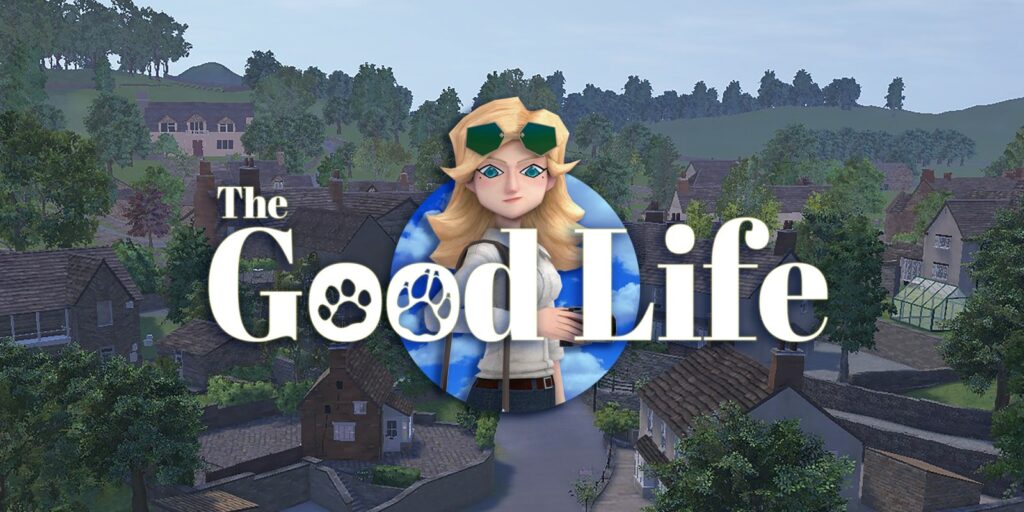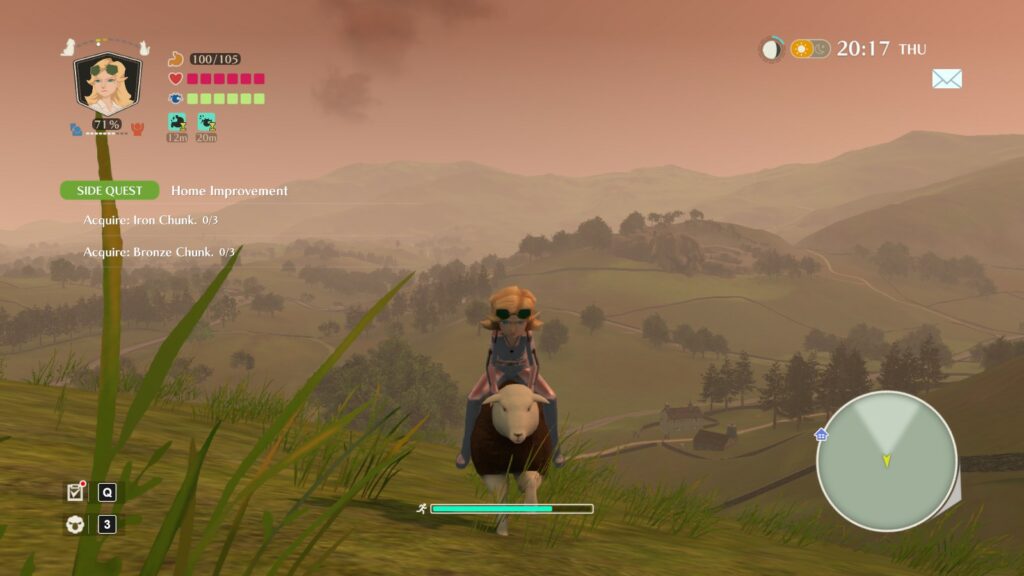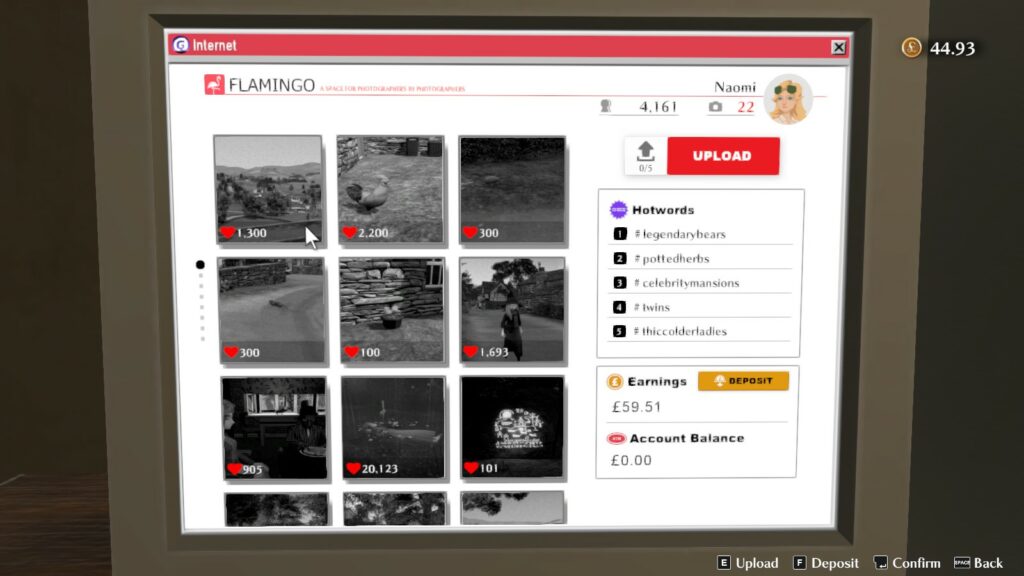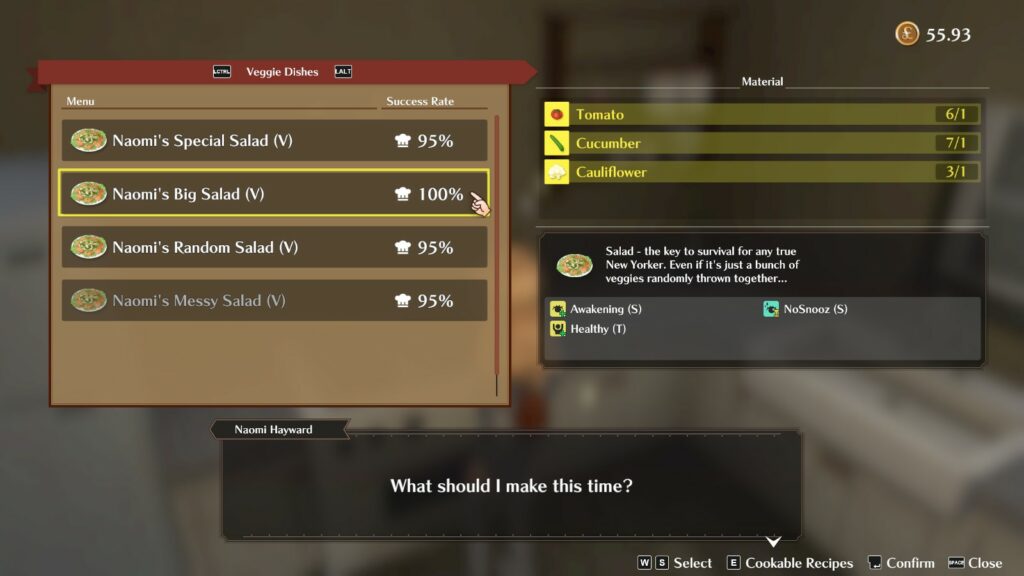
Developer: White Owls
Publishers: White Owls, Playism, Active Gaming Media
Platforms: PlayStation 4, PC, Nintendo Switch, Xbox One
Tested on: PC
The Good Life – Review
SWERY is one of the most famous indie authors out there, with cult favorites such as Deadly Premonition and its sequel under his belt. While not all of his games are the best designed and many of them have plenty of flaws, his vision tends to always generate something unique. Such is the case with his latest game, The Good Life. Here’s what it has to offer.
Story
The Good Life’s story follows Naomi Hayward, a debt-ridden New York journalist, who has been sent to the small English town of Rainy Woods and is tasked with uncovering its mysteries. However, Naomi soon witnesses the villagers transform into cats and dogs under the full moon, realizing not everything is what it seems in the quiet village.
Shortly after this, a brutal murder occurs in Rainy Woods, thrusting Naomi into a full-on investigation. During this investigation, three different main stories will open up, which players will be free to tackle in whichever order they prefer. The events of these paths will ultimately combine to lead into the grand finale of the game, culminating the events of the main story.
Besides the larger plot of the game, The Good Life also contains plenty of sidequests involving the town’s citizens. Through these, players will be able to get to know the characters better. Alongside Naomi herself, the inhabitants of Rainy Woods are one of the game’s highlights thanks to their unique personalities and good writing.
Graphics
Made up of a blocky 3D aesthetic reminiscent of older games, The Good Life’s graphics are rather well made and have a memorable style. The city and environments themselves also capture the look of real small rural towns particularly well, with the frequent rain adding to the veracity of the setting. Besides this, the character designs are also quite unique, each matching their personalities and they are easily distinguishable from others.
Sound
The game’s sound department features a quite good soundtrack and voice acting, although the sound effects in the English version could be very much improved. Said SFX are rather repetitive to the point of becoming annoying after a short while, with things such as Naomi’s “YEAH BABY” shout playing every single time the player accelerates while riding a sheep.
Gameplay
As is common with SWERY’s games, The Good Life’s gameplay doesn’t fit a single genre. The simplest way to describe it would be as a life sim with a heavy narrative focus, with a heavy blend of open-world gameplay and RPG mechanics thrown in the mix. Despite this mouthful of different genres, the gameplay loop is rather simple: Players will follow a series of quests to unfold the story or simply obtain rewards such as money or clothes.
The RPG mechanics come with the different stats Naomi possesses, which include health, stamina, hunger, sleep, charm, and healthiness. While health and stamina work the same way as usual, the others are not as straightforward: Hunger and sleep mark how close Naomi is to collapsing or losing health, charm affects shop prices based on Naomi’s cleanliness, and healthiness represents the chance for her to get sick.
In order to keep all of these meters up, players will be able to feed Naomi dishes and consumable items from the town’s shops. Each of these will provide different benefits alongside buffs, such as lower stamina consumption and more. Additionally, once players sample dishes enough times, they’ll be able to cook them with materials scavenged throughout the world, saving them some money.
Besides food, players will also be able to purchase new clothes for Naomi which will affect her stats, these also require materials and money to be crafted. However, the system for obtaining materials is unreliable at best, with these spawning randomly in certain spots, possibly requiring several in-game days to obtain. Somewhat compensating for this, players have a small garden at their disposal to grow certain materials, although you’ll only have a small selection when doing this.
Throughout the game, players will have several ways of obtaining money, some more reliable than others. The simplest consists of using the social network Flamingo to post pictures taken in the world, which will generate revenue based on popularity, affected by whichever themes they match. Other than this, quests will net chump change, with the notable exception being the repeatable altar assignments, found in the structures scattered on the map.
On top of all these mechanics, the ability to transform into a cat and a dog also brings unique benefits for each form. As a cat, Naomi will be able to climb marked spots, jump higher and move faster, while as a dog she’ll be able to scavenge trashcans, fight wild animals, track scents, and pee in certain spots. Curiously enough, in what is possibly an oversight, stamina consumption is removed in these forms while jumping, making bunny hopping the easiest way to travel earlier on.
The other way players may travel through the world, besides walking and fast traveling between altars, is by riding a sheep. Sheep can be captured and kept in a pen, where Naomi may shear and pet them to increase their stats, improve their speed, and more. However, the controls while riding sheep leave much to be desired, being rather imprecise on top of the unnerving “YEAH BABY” shouts.
One of The Good Life’s largest problems comes with its open world, which is barren for the most part besides fences blocking patches of land. While players may choose to explore the world, they will find little more than empty fields and the occasional altar or building. Everything necessary for gameplay is contained generally close to the town, with the open world only making the few outliers such as mines and mountains a drag to get to until their fast travel spot is unlocked.
Similarly, while the game’s mechanics are functional enough, plenty seem like an afterthought. With so many different stats to keep track of, a good few soon become irrelevant and ultimately make the game feel like a potpourri of ideas. Such is the case for the ailments Naomi may be affected by, which can only be cured for insane amounts of money at the veterinarian or by purchasing medicine, which seemingly provides the same effect at a portion of the cost. Even so, once an ailment is cured, it may immediately come back based on random luck, soon becoming a nuisance to be ignored, rather than an important mechanic.
Conclusion
The Good Life is an interesting game with good ideas and oddly charming gameplay. However, it is a rather shallow experience, running out of new things after a while, and reducing the remaining content to a dull grind. Luckily, the main story can be cleared in about 6 hours and this offers the bulk of the content, letting players engage with everything else only as much as they desire. Sold for $29.99/€24,99/£23.99, the game is rather expensive for the actual content offered, making it recommendable to wait for a sale.
Personal Opinion
“Playing The Good Life was an interesting experience, thanks to SWERY’s “unique” game design ideas. While the game is completely functional and fun at times (the writing definitely being a highlight), it could do with a LOT of streamlining and quality control. Things like having to sleep for a week to continue a quest, having to travel for 10 minutes, and other little nuisances, add up to become a pain to deal with. At the end of the day, most of the fun I got out of this game was from simply following the storyline and a few quests, rather than from any of the other content.”
The Good Life - Review,










No Comments